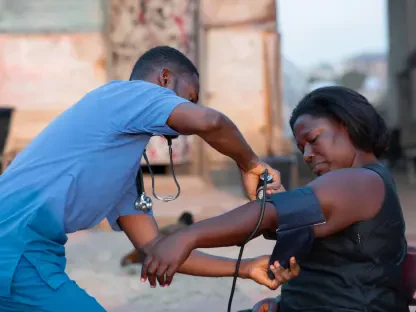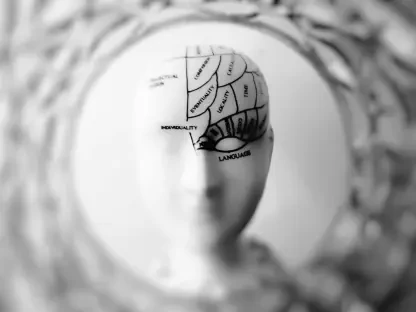James Maitland is an expert in robotics and IoT applications in medicine, driven by a strong passion for leveraging technology to advance healthcare solutions. Today, we are discussing several aspects of public discourse, vaccine hesitancy, pandemic preparedness, and advancements in immunotherapy.
How would you describe the current state of public discourse?
The whole character of public discourse has changed significantly. The rise of social media has altered how we communicate publicly, making discussions more polarized. Previously, there was a collective view that everyone deserved a fair go, but that has been eroded over time, particularly in places like the United States.
What role has social media played in changing public discourse?
Social media has dramatically shifted public discourse by amplifying voices and opinions, often leading to greater polarization. It allows for rapid dissemination of information, but also misinformation, which can divide communities and challenge collective thinking.
How has public discourse become more polarized over the years?
The erosion of a collective view and the rise of social media have contributed to a more polarized public discourse. People increasingly find themselves in echo chambers, where their beliefs are constantly reinforced, making it harder for diverse opinions to be heard and understood.
Who are the vaccine hesitant, and how would you describe them?
Vaccine-hesitant individuals often have understandable concerns. Vaccination is a medical procedure with inherent risks, and the rapid development and deployment of COVID-19 vaccines, despite their life-saving impacts, brought this to the forefront. People are wary due to side effects and the speed at which these vaccines were brought to market.
What factors contribute to vaccine hesitancy?
Factors contributing to vaccine hesitancy include concerns about safety, side effects experienced by some individuals, and the perception of risk versus benefit. Media reports and misinformation can also influence public perception, making people skeptical about vaccine effectiveness and safety.
How have the COVID-19 vaccines affected public perception of vaccines in general?
COVID-19 vaccines have both saved lives and led to some adverse reactions, affecting public perception. While the rapid development was a scientific triumph, issues like myocarditis in adolescent males and deaths among older women from certain vaccines have contributed to skepticism and hesitancy.
Can you explain the specific issues older women faced with the adenovirus-vectored vaccine developed in Britain and initially produced by CSL?
The adenovirus-vectored vaccine developed in Britain and initially produced by CSL unfortunately had severe side effects for some older women, resulting in fatalities. This led to the vaccine being quickly withdrawn, contributing to concerns and hesitancy among the public.
What were some of the side effects experienced by adolescent males with the mRNA vaccines during the COVID-19 pandemic?
Adolescent males who received mRNA vaccines during the COVID-19 pandemic experienced cases of myocarditis, an inflammation of the heart muscle, which led to hospitalizations and, in some cases, permanent damage. This has fueled concerns and hesitancy towards mRNA vaccines.
How can we rebuild trust in vaccines among the public?
Rebuilding trust in vaccines involves clear, transparent communication and pointing to evidence. The standard childhood vaccines are extremely well-tolerated, safe, and effective, and emphasizing their long-term success can help in regaining public confidence.
Are the standard vaccines given to children today safe and well-tolerated?
Yes, the standard vaccines given to children today are safe and well-tolerated. They have a long history of proven effectiveness and are crucial in preventing serious diseases, making them the gold standard in pediatric healthcare.
Is Australia prepared for the next pandemic?
While no country can be fully prepared for a catastrophe, Australia’s preparedness is improving. The establishment of the Australian CDC will enhance cooperation between states, which is critical for managing public health crises in the future.
Can you elaborate on the role of the new Australian CDC in pandemic preparedness?
The new Australian CDC is expected to facilitate better coordination among states, ensuring a more unified and effective response to pandemics. This will likely improve communication, resource allocation, and implementation of public health measures.
How did Australia’s states perform during the COVID-19 pandemic?
Australia’s states performed well during the COVID-19 pandemic, with effective public health measures and good cooperation overall. However, better coordination between states could have further enhanced the response.
What were some of the challenges of coordinating a national clinical trial in Australia?
Coordinating a national clinical trial in Australia is challenging due to the country’s federated health system. Unlike the military, health responsibilities are managed at the state level, making nationwide coordination complex and difficult.
How has immunotherapy evolved since your Nobel Prize-winning discovery in 1973?
Since the discovery of how the immune system recognizes virus-ridden cells, immunotherapy has revolutionized treatments for chronic and autoimmune diseases. Monoclonal antibodies are now major treatment options, particularly for conditions like multiple sclerosis and certain cancers.
What are some of the major diseases that have seen advancements in treatment due to immunotherapy?
Major diseases benefiting from immunotherapy advancements include multiple sclerosis, various cancers, and rheumatoid arthritis. Monoclonal antibodies and T-cell therapies have significantly improved treatment outcomes for these conditions.
What are immune checkpoint inhibitor monoclonal antibodies, and how do they work in treating cancers?
Immune checkpoint inhibitor monoclonal antibodies work by reactivating T cells that have become inactive in the presence of cancer. This helps the immune system recognize and attack cancer cells more effectively, improving treatment outcomes.
How is personalized cancer treatment being developed with vaccines made from an individual’s own cancer cells?
Personalized cancer treatment involves creating vaccines from a patient’s own cancer cells, combined with immune checkpoint inhibitors. This approach tailors the immune response to the specific characteristics of the individual’s cancer, potentially leading to better treatment success.
What is the potential of molecular medicine?
Molecular medicine holds great potential for developing targeted therapies and personalized treatments. It allows for a deeper understanding of diseases at a molecular level, leading to more precise and effective interventions.
How much do we still have to learn about the immune system?
Despite significant advancements, we still have much to learn about the immune system. Its complexity and the lack of a central processing unit make it a challenging area of study with many unanswered questions.
How does the immune system differ from the brain in its method of processing information?
Unlike the brain, the immune system lacks a central processing unit. It operates as a mobile system, with cells moving throughout the body and reacting independently to foreign invaders. This distributed nature adds to the complexity of understanding immune responses.
Why is understanding the immune system’s mechanisms so challenging?
Understanding the immune system is challenging due to its complexity and mobility. The mechanisms involve numerous cells and tissues, each playing different roles, and the system’s ability to adapt and respond to a vast array of pathogens adds further layers of complexity.
What are some of the unanswered questions in neurosciences and immunology?
Unanswered questions in neurosciences and immunology include understanding consciousness, the specifics of where immune responses occur, and how the immune system maintains stable cell counts. Both fields face significant challenges in unraveling the intricate details of complex biological systems.
Do you have any advice for our readers?
My advice for readers is to stay informed with reliable information, especially concerning public health and vaccines. Trust scientific evidence, and engage in open dialogues to understand different perspectives. We’re all in this together, and collective understanding and cooperation are key to overcoming health challenges.









